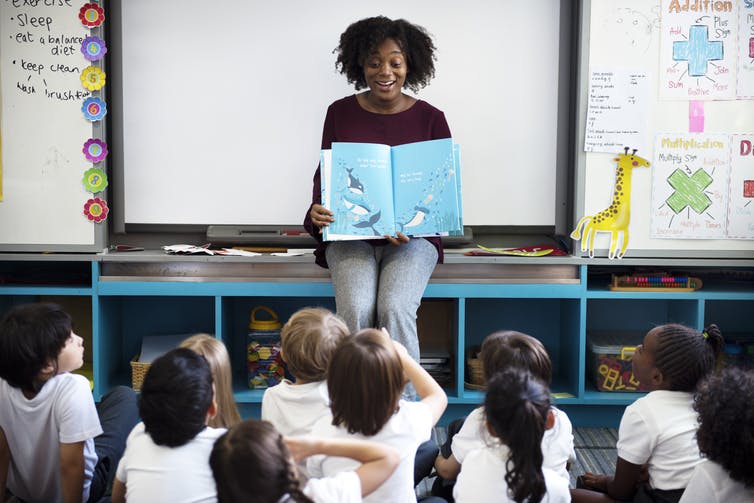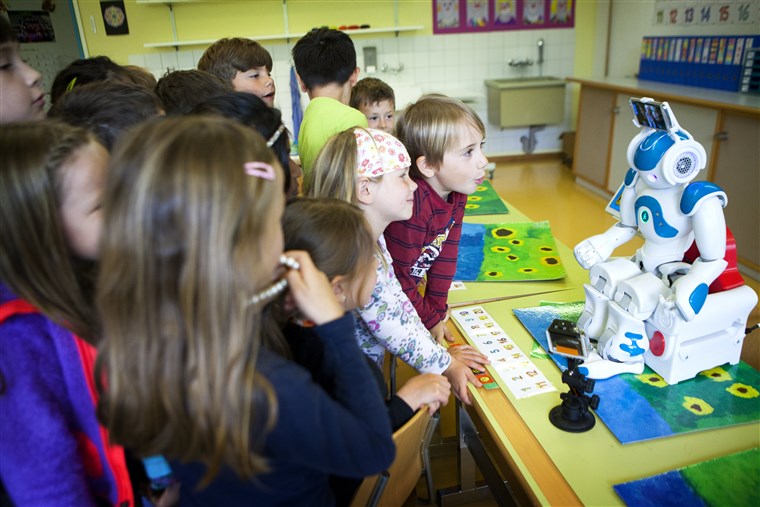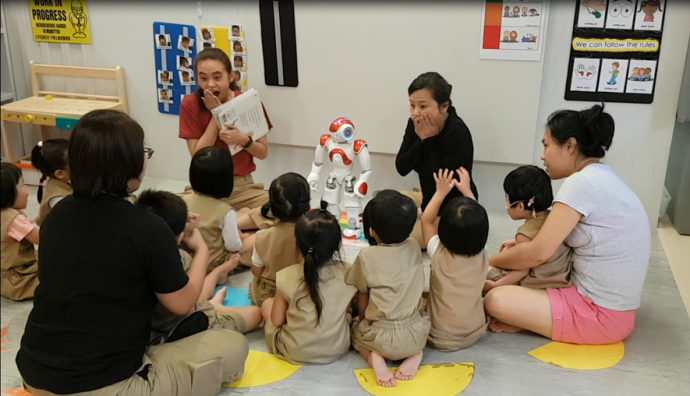People say unbelievable things all the time and often we may wish they were true. These stories touch our imagination, as we feel ourselves playing a role in the story in both time and place. More often than not, they are make believe and are told to attract the audience, whether it's a small group of friends or family or a larger group such as a school classroom or even a conference attended by the business community.

When it comes to teaching in the classroom, research shows that children tend to retain more knowledge when they can connect it with a classroom activity. One of the most common classroom activities is storytelling. Children love listening to their teachers telling stories. While they listen, they begin to focus and follow the story through until its end.
By Sarah Liu
As a teacher, this is exactly what you want: a way to centrally focus the thirty children you have sitting in front of you. Once one child follows, it's surprising how one by one, every child will settle down and listen. They will stop texting their friends or making distractive faces at each other and focus.
The question is: How goal-centered should these storytelling sessions be? You can't waste too much curriculum time simply sharing stories about your experiences at their age. Instead of using the odd five minutes of time you have left at the end of class to quickly tell a story, you can try to incorporate storytelling as a part of your lesson so that your students stay engaged and focused throughout.
5 Ways to Use Storytelling in the Classroom
- SHARE YOUR OWN EXPERIENCES.
When you know you are trying to teach a difficult concept, teach your class with a story of how you managed to understand and remember the concept when you were in their shoes. Explaining the theory of gravity is a hard concept for students to grasp, but by telling a story, they may understand that although we are visibly fixed firmly to the ground, there are forces of gravity constantly working against us.
- USE A STORY TO INTRODUCE A NEW TOPIC.
At the start of a lesson, use a story as a way of introducing a new topic. If you can't think of any with ease, you may find some ready-made ones on the Internet that might fit your topic. Do remember that copied material, whether it's written text or the spoken word, should not be used in its original form as you may be breaching copyright rules.
- USE A STORY TO ILLUSTRATE A CONCEPT.
Occasionally, straight figures and facts don't necessarily make for easy understanding, so throw in a narrative to help your class retain these hard facts.
- NURTURE LISTENING SKILLS.
As young people progress through their early years, listening skills become increasingly important, and there’s no better way to improve attention span and listening skills than by telling stories to keep them attentive. Of course, as useful as storytelling is, the stories should be relevant to the curriculum material for students to reap any benefits.
- STORYTELLING ATTRACTS LESS MOTIVATED LEARNERS.
Many kids these days are completely turned off old-fashioned textbooks and even sitting behind a computer screen does not help much. However, storytelling with a useful theme may engage the more lethargic learner. These are the students who you may engage the most if you throw in a few interesting stories to keep them motivated. Storytelling is an age-old art shared among friends, families and strangers, and its presence can captivate young and even older learners in the classroom too.

Grammar and Vocabulary Through Storytelling
With these stories you can demonstrate your students how grammar and in particular way the tenses are used in storytelling. For example, if you’re telling a story of an event back in time, you’ll be using the past tense to describe the events. Similarly, a fictional story used as the basis for events you may predict will happen in the future, the bulk of the story will be told in the future tense. Of course, some stories may use different tenses depending on when a certain event is taking place.
One of the important features of storytelling is exciting the listener's mind so that he and she were captivated by the story you’re telling. One of the best ways of doing this is to use appropriate nouns, adverbs and adjectives. Those that depict color and actions are particularly forceful when attracting and keeping readers' attention.
What about Storytelling with robots?
Discover these lessons of Storytelling with NAO robot and Pepper robot! Check our online learning platform Engage!K12 and find out more!

This article is original from Teach Make a Difference: https://teach.com/great-educational-resources-the-power-of-storytelling/



